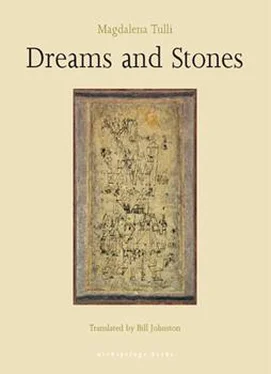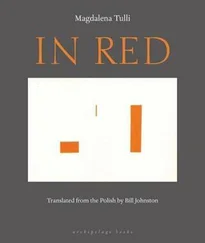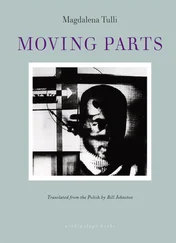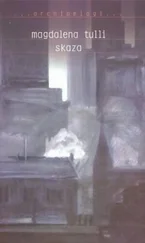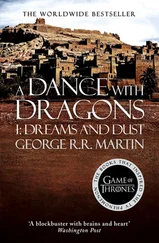At times there were discrepancies between later plans and earlier ones. Successive projects were faced with an ever greater number of particular requirements and restrictions. The most recent were developed in multiple mutually exclusive versions, every one of which had some defect. An eight-story apartment building broke up the perspective of a street and blocked the view of the palace but a low shopping arcade in the same place was soon surrounded by crooked stalls that introduced a spirit of insubordination, disarray and truculence. An underground parking lot, spitting out dozens of automobiles per minute, could not be built in the proximity of the school, yet the school could not be closed down so as not to leave unsupervised the local children, who were in the habit of setting fire to trash bins and throwing stones at windows. Each of the projects was imperfect yet each had certain advantages; for this reason the limping whole spread out on the drafting boards needed all of them at once to avoid collapse. In this way space acquired a depth possessing qualities that could not be encompassed by the mind. Three dimensions are sometimes too many; what then of fifteen? Suffice it to say that park, viaduct and department store were able to occupy the same location in space without interfering with one another in the slightest, while their paths, escalators and lanes intersected without ever colliding.
Everything that happened on the draftsmen’s desks was connected in a complex way with changes that took place in the city of bricks, where in the meantime there had appeared new bridges, new monuments and new chiming clocks. But the multiplicity of interpenetrating spaces and the accumulation of variants meant that none of these works had the panache of earlier ventures from the infancy of the world. Interiors became cramped, granite and sandstone ceased to be lavishly used, façades were no longer decorated with bas-reliefs which at some unknown moment had gone out of fashion. It should also be noted here that the new chimes rang somewhat out of tune and that their sound barely rose above the hubbub of the street.
It was easier and easier to see additional unplanned cities that had arisen no one knew when or how and that undermined the entirety with their hole-and-corner endurance. The police officer directing the traffic inhabits a city built of license plates to which are added car bodies, chassis, engines and turn signals. For the switchboard operator the metropolis of telephone receivers, enwrapped in cables, grows from the municipal telephone exchange as from a hidden rootstock. The drunkard’s city is empty; it is composed only of undulating trails of light and hard edges rising up unhampered in space. Different still is the city of the dead person; it is entirely devoid of radiators, dank and dark; one cannot even ask for a cup of hot tea there and it is quite simply unlivable, especially at five o’clock in the morning, that coldest of hours.
Because of the existence of all these interpenetrating spaces a city becomes ever more confused, entangled, diffuse. It has to be simultaneously dark and light, crowded and deserted, noisy and soundless. And also, it must finally be admitted, it has to mean many things at once and mean nothing. Depending on the needs of the moment, its name could signify license plates, telephones, undulating trails of light, or anything else that in someone’s eyes can form itself into a pattern called a city and that conceals the walls just as the beautiful and improbable glass of a kaleidoscope placed between the eye and the source of light takes the place of heaven and earth.
In this way the city misted over, lost its clear contours and became partly invisible. Yet even without seeing the city its inhabitants felt its existence distinctly enough. The rough walls of its buildings, the depth of stairwells bearing the dirty colors of oil paint, the unreliability of its elevators like cupboards suspended on steel cables in cavernous shafts, the scored interior walls, the spat-upon floors and broken bottles in corners. It was better not to see the never-washed windows in the factory halls or the machines whose lack of perfection was evident even when they stood idle. Their housings, covered in peeling paint, were thick and weighty, marked by the coarse angularity of the molds in which they had been made. Despite the uncomplicated nature of the casting every second one came out defective. Coal was not spared; enough of it was burned to turn the cast-iron shell back into red-hot pig iron. It was known that thinner castings would never work. Every part bore the stamp of its relationship with the hammer and the wrench; scratches testified to the lack of precision that weighed on these tools whose blind power was capable of breaking the resistance of rusted carbon-coated screws as thick as a finger.
The inhabitants of the city preferred not to broach openly the sensitive matter of the machines. They knew they had been built in a nostalgic adoration of perfection with a wish to amaze the world and that the substances out of which they had been made had always proved more unwieldy and intractable than that from which thoughts arise. The inquisitive and insolent operators of the machines encountered technical solutions introduced from elsewhere and compared their quality with that of the mythical original. In this city imitations never attained the level of their prototypes, whose brands were mentioned in a whisper with shining eyes, bringing the discussion to a close. The more magnificent they sounded the more contempt was felt for the local mechanisms of production that actually existed — the only ones that could be hooked up to the network and set in motion. While the mechanisms were still new people waited for them to be run in. This took place at some unknown point amongst successive breakdowns. Their gears jammed, their screws snapped and nuts fell into their cog-wheels. The machinery of the city worked sluggishly amid earsplitting signs of damage, amid rattling and grinding. Here every object had its defects which were a part of its nature, perhaps the most important part, which needed only time to be revealed. That was why pipes had to become clogged and tanks had to leak. The more complex their construction the sooner they started to jam, fall apart and corrode.
AT A CERTAIN TIME A LARGE NUMBER OF DARK STARS APPEARED in the sky of permanent stars which was suspended above the sky of clouds and below the sky of suns and moons. These were said to be merely ordinary stars that differed from others only in that for some reason they had died. And since they no longer shone they had become invisible. They were smashed to pieces by the helicopters of the municipal transit system which were roaming aimlessly beneath the vault of the sky without fuel, which they could not refill since there was nowhere to land: The landing pads on the rooftops had never been built and now they were overgrown with dense jungles of antennas.
The fragile lustrous substance that the stars were made of lost its transparent quality after the collisions and rained down on the city as a black dust. From it the plaster darkened. With time the buildings took on the same shade of gray as the cloudy sky and in this manner disappeared. As the problem of the power supply worsened successive stars were extinguished and ever greater quantities of black dust accumulated, falling like a shadow on sky and earth and obscuring every source of light, including the sun. The eyes of passersby skimmed over the tops of façades lost in the clouds. No one enjoyed any of the wonders of the city. The stone bricklayers in their stone clothing stood alone on heavy stone legs in the recesses of walls, needlessly wielding their pickaxes. With pigeons puffed up from the cold perched on their heads they endured, unnoticed, in the darkness of the street. The buildings, clouds and earth were all cloaked in the same hue and even the birds melted into the background. It was easier to see them in stamp albums, where at least they were not freezing.
Читать дальше
